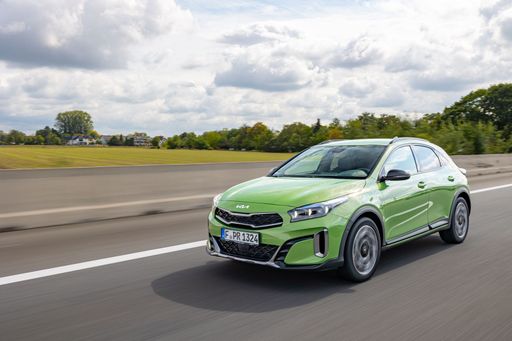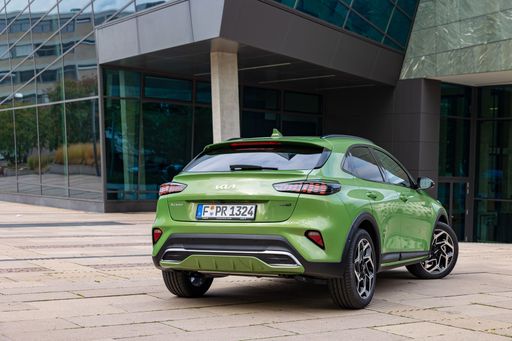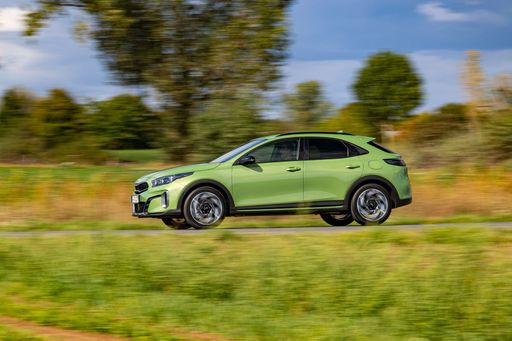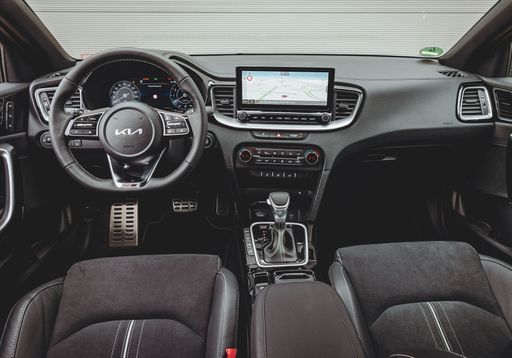Citroen Jumper VS Kia XCeed – Specs, Efficiency & Price Comparison
Which model is the better choice – the Citroen Jumper or the Kia XCeed? We compare performance (279 HP vs 140 HP), boot capacity ( vs 426 L), efficiency (26.20 kWh7.50 L vs 6.30 L), and of course, the price (34200 £ vs 23700 £).
Find out now which car fits your needs better!
The Citroen Jumper (Cargo Van) is powered by a Electric or Diesel engine and comes with a Automatic or Manuel transmission. In comparison, the Kia XCeed (SUV) features a Petrol engine and a Manuel or Automatic gearbox.
When it comes to boot capacity, the Citroen Jumper offers , while the Kia XCeed provides 426 L – depending on what matters most to you. If you’re looking for more power, you’ll need to decide whether the 279 HP of the Citroen Jumper or the 140 HP of the Kia XCeed suits your needs better.
There are also differences in efficiency: 26.20 kWh7.50 L vs 6.30 L. In terms of price, the Citroen Jumper starts at 34200 £, while the Kia XCeed is available from 23700 £.
Compare all the key specs now and find out which model fits your lifestyle best!
Citroen Jumper
The Citroen Jumper impresses with its robust design and exceptional versatility, making it a popular choice for both business and leisure purposes. Its spacious interior is thoughtfully designed to maximise comfort and practicality, providing ample room for passengers and cargo alike. With a smooth driving experience and a range of advanced safety features, the Jumper is well-equipped to handle the demands of modern motoring.
detailsKia XCeed
The Kia XCeed offers a stylish and modern design, blending the sportiness of a coupé with the practicality of an SUV. Its interior is well-crafted, featuring high-quality materials and a range of advanced technology to enhance the driving experience. With an emphasis on comfort and efficiency, the XCeed provides a compelling option for those seeking a versatile and dynamic vehicle.
details @ press.kia.com
@ press.kia.com
 @ press.kia.com
@ press.kia.com
 @ press.kia.com
@ press.kia.com
 @ press.kia.com
@ press.kia.com

|
|
|
|
|
Costs and Consumption |
|
|---|---|
|
Price
34200 - 57800 £
|
Price
23700 - 31400 £
|
|
Consumption L/100km
7.5 - 9 L
|
Consumption L/100km
6.3 - 6.5 L
|
|
Consumption kWh/100km
26.20 kWh
|
Consumption kWh/100km
-
|
|
Electric Range
424 km
|
Electric Range
-
|
|
Battery Capacity
97.80 kWh
|
Battery Capacity
-
|
|
co2
0 - 233 g/km
|
co2
143 - 148 g/km
|
|
Fuel tank capacity
90 L
|
Fuel tank capacity
50 L
|
Dimensions and Body |
|
|---|---|
|
Body Type
Cargo Van
|
Body Type
SUV
|
|
Seats
3
|
Seats
5
|
|
Doors
4
|
Doors
5
|
|
Curb weight
2075 - 2940 kg
|
Curb weight
1347 - 1400 kg
|
|
Trunk capacity
-
|
Trunk capacity
426 L
|
|
Length
5413 - 6363 mm
|
Length
4395 mm
|
|
Width
2050 mm
|
Width
1826 mm
|
|
Height
2254 - 2850 mm
|
Height
1495 mm
|
|
Payload
560 - 2020 kg
|
Payload
470 - 473 kg
|
Engine and Performance |
|
|---|---|
|
Engine Type
Electric, Diesel
|
Engine Type
Petrol
|
|
Transmission
Automatic, Manuel
|
Transmission
Manuel, Automatic
|
|
Transmission Detail
Schaltgetriebe, Automatikgetriebe
|
Transmission Detail
Schaltgetriebe, Automat. Schaltgetriebe (Doppelkupplung)
|
|
Drive Type
Front-Wheel Drive
|
Drive Type
Front-Wheel Drive
|
|
Power HP
120 - 279 HP
|
Power HP
100 - 140 HP
|
|
Acceleration 0-100km/h
-
|
Acceleration 0-100km/h
10.2 - 13.4 s
|
|
Max Speed
90 - 170 km/h
|
Max Speed
174 - 195 km/h
|
|
Torque
320 - 450 Nm
|
Torque
172 - 253 Nm
|
|
Number of Cylinders
4
|
Number of Cylinders
3 - 4
|
|
Power kW
88 - 205 kW
|
Power kW
74 - 103 kW
|
|
Engine capacity
2184 cm3
|
Engine capacity
998 - 1482 cm3
|
General |
|
|---|---|
|
Model Year
2024
|
Model Year
2024
|
|
CO2 Efficiency Class
A, G
|
CO2 Efficiency Class
E
|
|
Brand
Citroen
|
Brand
Kia
|
Citroen Jumper
A Game-Changer in the Electric Van Market: The Citroën Jumper
The Citroën Jumper stands out in the realm of electric vans, bringing a blend of innovation, efficiency, and versatility to the table. This vehicle is designed to meet the needs of businesses searching for sustainable transport solutions, while also delivering impressive performance and technology.
Power Meets Performance: Technical Specifications
The Citroën Jumper is powered by an electric motor that provides an impressive 270 PS (200 kW) output. It operates with front-wheel drive and utilises an automatic transmission for smooth and efficient power delivery. The vehicle boasts a maximum torque of 410 Nm, ensuring it can handle various loads with ease.
A critical factor for business owners is operational cost, and the Jumper excels with a consumption rate of 26.2 kWh/100km and a driving range of 424 km on a full charge. This efficiency is complemented by a zero-emissions output, earning it a CO2 efficiency class of A.
Innovative Design and Features
Citroën has ingeniously optimised the Jumper's design for practicality and comfort. With a body style classified as a transporter, the vehicle is crafted for utility without sacrificing on essentials. It features a standard four-door configuration and offers seating for three, making it a practical choice for various industries.
The versatility in design is reflected in its various configurations, capable of accommodating different load requirements with a payload capacity ranging from 560 to 1385 kg. The Jumper's dimensions vary slightly with model choice, with lengths between 5998 mm and 6363 mm, width at 2050 mm, and height ranging from 2612 mm to 2850 mm.
Electric Innovation at its Core
At the core of the Citroën Jumper is its robust 97.8 kWh battery, making long journeys more feasible in the realm of electric vehicles. Notably, the vehicle maintains a lighter carbon footprint, contributing to sustainable transport solutions with its zero CO2 emissions.
Another innovation is the vehicle's capacity to reach top speeds between 90 km/h to 130 km/h, which shows that electric vans can maintain competitive performance metrics.
A Worthy Investment
While the Citroën Jumper signifies a higher initial investment, with prices ranging from €65,212 to €68,425, it promises considerable savings in fuel costs and environmental benefits over time. It presents an attractive proposition for businesses keen on contributing positively to the planet while maintaining operational efficiency.
In summary, the Citroën Jumper is a perfect embodiment of how electric vehicle technology can adapt to commercial needs, offering an efficient, innovative, and environmentally friendly transport solution.
Kia XCeed
The Striking Design of the Kia XCeed
The Kia XCeed presents a refreshing take on the compact SUV segment with its sleek silhouette and expressive design. Sporting an eye-catching front grille, LED headlights, and a stylish coupé-like roofline, it combines aesthetics with aerodynamics. This design not only enhances its road presence but also contributes to fuel efficiency.
Dynamic Engine Options
Underneath the stylish bonnet of the Kia XCeed is a range of lively petrol engines. With options extending from a 1.0-litre T-GDI producing 100 PS to a more robust 1.5-litre T-GDI pumping out 140 PS, drivers can select the ideal balance of power and efficiency. The engines are paired with either a manual or a dual-clutch automatic transmission, delivering a smooth and responsive driving experience.
Innovative Features and Technology
The Kia XCeed is not just about looks, but also brains. It comes loaded with innovative features like the advanced driver assistance system, providing a safer drive. The infotainment system is seamlessly integrated with smartphone capabilities, ensuring that drivers and passengers stay connected and entertained effortlessly.
Practicality Meets Performance
Despite its sleek appearance, the Kia XCeed does not compromise on practicality. It offers a generous boot space of 426 litres, making it an excellent choice for families and adventurers alike. The interior is designed for comfort, with ample headroom and legroom for all passengers.
Fuel Efficiency and Environmental Friendliness
Efficiency is at the heart of the Kia XCeed, with a fuel consumption range of 6.3 to 6.5 litres per 100 km. These figures position the XCeed as a competitive option for environmentally conscious drivers, despite the engine performance. The CO2 emissions stay within a moderate range, aligning with its commitment to sustainability.
Cost of Ownership
Owning a Kia XCeed is not only about driving joy but also financial prudence. With monthly costs ranging from €922 to €1,058 and a reasonable maintenance cost per kilometre, it is a sensible choice for those looking to minimise running expenses.
Conclusion: The Future of Compact SUVs
The Kia XCeed sets a new standard for what compact SUVs can offer, blending exciting design, dynamic performance, and cutting-edge technology. It's an ideal vehicle for those who want a mix of style, practicality, and efficiency in their automotive choice.
The prices and data displayed are estimates based on German list prices and may vary by country. This information is not legally binding.
